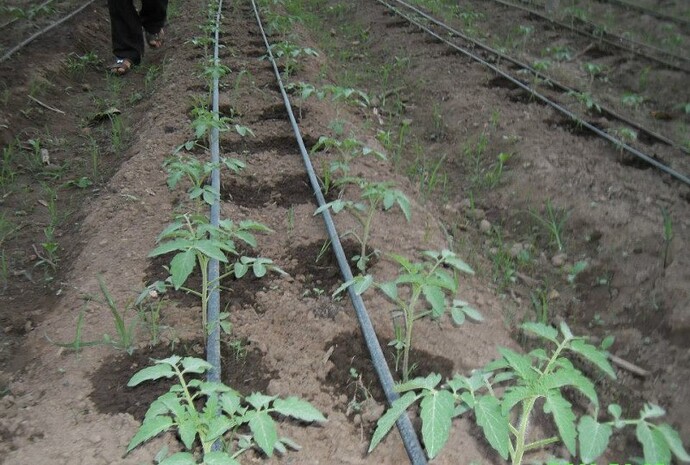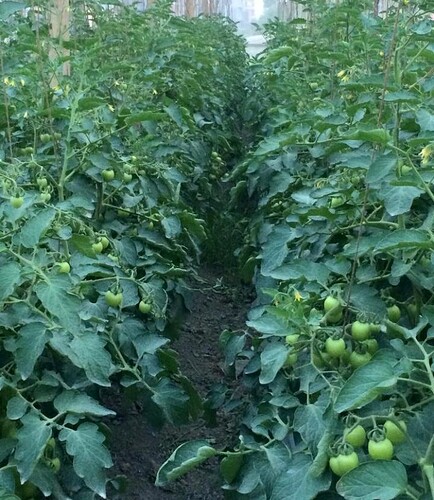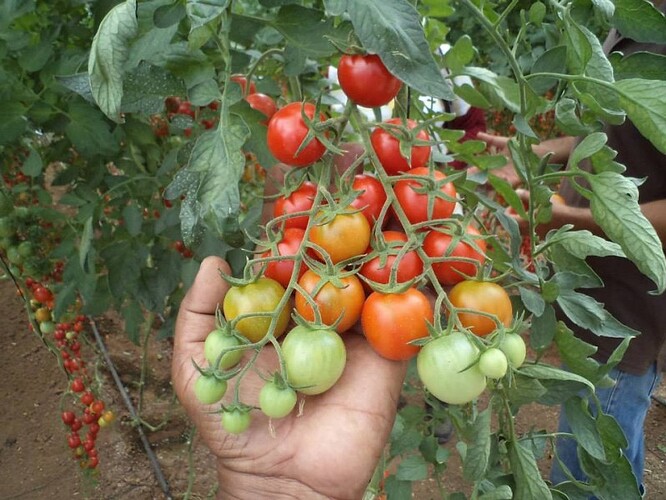Soil Requirement: Well drained, fertile loam with a fair moisture holding capacity is the most ideal soil for tomato cultivation. However it can be grown in variety of soil condition with appropriate cultural practices
Climate: Tomato is a warm season crop which require long season to produce a profitable crop and highly susceptible to frost.
High temperature and high humidity favours development of foliar diseases.
Dry wind results in dropping of flowers.
Seeds germinate at a temperature range of 15.5 to 30oC, optimum being 25 degree celsius .
Night temperature is the critical factor in fruit setting, the optimum range is 15-20 degree celsisus
Spacing – row to row spacing 1.5 M
Plant to plant spacing – 0.60 M
Planting method – Paired row method – two rows of tomato in single bed
Total running meter per acre – 2666 meters
Total number of plants per acre @ above spacing – 8886 plants
No of truss per plant – 2 truss
Average weight of fruits per plant – 12 kgs
Total yield – 100000 kgs ( 106,632 kgs )
No of fruits per plant – 200 fruits
Average individual fruit weight – 60 grams
Fertigation with water soluble fertilizers per acre
Basal application – 470 kgs of super phosphate per acre applied before last ploughing
And 15 MT of farm yard manure
25- 30 days old tomato seedlings raised in protray are used for transplanting in the main feild
Drip irrigation with emitters spacing of 3.5 to 4.0 lit per hour discharge capacity espaced at 50 cms to 60 cms along the lateral pipes
Water soluble fertilizers for fertigation
Establishment phase ( 10 days duration ) – 19-19-19 +MN ,NPK – 26.300kgs , 13- 45 -0 NPK – 9.10 kgs and Urea – 3.4 kgs
Flower initiation – flowering stage ( 30 days ) – 19-19-19 +MN NPK – 16.40 kgs , 13-0-45 NPK – 89 kgs , Urea – 40 kgs
Flower to fruiting ( 30 days ) – 19-19-19 + MN – 26.30 kgs , 13-0-45 NPK – 55.50 kgs , Urea – 25.50 kgs
Harvest phase – 12-61-0 NPK – 8.20 kgs , 13-0-45 NPK – 44.5 kgs , Urea – 20.0 kgs
Micornutrient – borax @ 35 grams per lit water sprayed at 65 and 105 th day after tranplanting
Triacontanol hormone sprayed @ 42 & 58 th day after transplanting
Pseudomonas florescens is sprayed @ 5 grams / lit water – 50, 55,70, 85, 100 and 115 days after transplanting to prevent disease occurrence .
Planofix is sprayed t 70, 85 and 100 th days to prevent flower droppings
TOMATO CROP HUSBANDRY.docx (25.1 KB)


